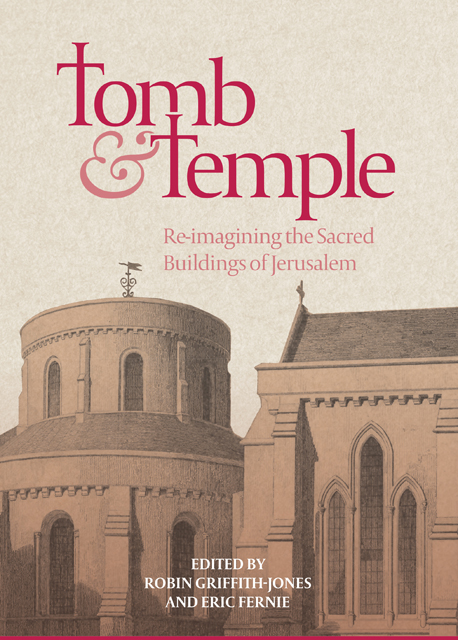Book contents
- Frontmatter
- Contents
- Illustrations
- Preface
- Contributors
- Abbreviations
- Editors’ Note
- Introduction
- Part I Re-presenting Jerusalem
- Part II The Church of the Holy Sepulchre
- Part III The Noble Sanctuary / The Temple Mount
- Part IV The Orthodox Churches
- Part V Round Churches in the West
- Appendix: The Knights’ Effigies: Newly Discovered Drawings by John Guillim, c. 1610
- Epilogue
- Index
- Already Published
Introduction
Published online by Cambridge University Press: 17 January 2023
- Frontmatter
- Contents
- Illustrations
- Preface
- Contributors
- Abbreviations
- Editors’ Note
- Introduction
- Part I Re-presenting Jerusalem
- Part II The Church of the Holy Sepulchre
- Part III The Noble Sanctuary / The Temple Mount
- Part IV The Orthodox Churches
- Part V Round Churches in the West
- Appendix: The Knights’ Effigies: Newly Discovered Drawings by John Guillim, c. 1610
- Epilogue
- Index
- Already Published
Summary
He was crucified, and we do not deny it; on the contrary, I glory to speak of it. For though I should now deny it, here is Golgotha to confute me, near which we are now assembled; the wood of the Cross confutes me, which was afterwards distributed piecemeal from hence to all the world. … From among the things upon earth, there will cry out upon you this holy Golgotha, which stands high above us, and shows itself to this day, and still shows how the rocks were then riven because of Christ; the sepulchre near at hand where he was laid; and the stone which was laid on the door, which lies to this day by the tomb.
But would you like to know the place too? Again he says in the Song of Songs, ‘I went down into the garden of nuts’ [Song of Songs 4.11]; for it was a garden where he was crucified [John 19.41]. For though it has now been most highly adorned with royal gifts, yet formerly it was a garden, and the signs and the remnants of this remain. … He says, ‘So wait for me, says the LORD, until the day of my resurrection at the Witness’ [marturion, Zeph. 3.8 LXX]. You see that the prophet foresaw the place also of the resurrection, which was to be surnamed ‘the Witness’. Why is this spot of Golgotha and of the resurrection not called, like all other churches, a church, but a witness? Perhaps, because of the prophet, who had said, ‘until the day of my resurrection at the Witness’.
Cyril of Jerusalem, Catechetical Lectures, 347–48, delivered at Calvary in the Holy Sepulchre, extracts from 13.4, 13.39 and 14.5–6
We begin with the Holy Sepulchre, from Constantine in the early fourth century through to the crusaders in the twelfth. Griffith-Jones surveys the early literary and archaeological evidence, and is among those who view Eusebius’ account with some caution. When completed, under Constantine or his son, the complex as a whole will have been of overwhelming grandeur: the eastern stairs, portico and entrance; westwards into the basilica; through to the courtyard; and finally, at the western end, the rotunda.
- Type
- Chapter
- Information
- Tomb and TempleRe-imagining the Sacred Buildings of Jerusalem, pp. 51 - 52Publisher: Boydell & BrewerPrint publication year: 2018

